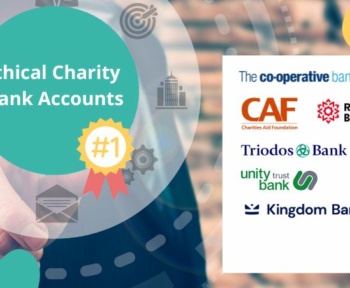Dan Bishop, Head of Customer Support and Operations at ExpensePlus, shares some advice on managing financial risks faced by churches and charities. Discover ways to approach financial management and the roles your team can play.
Risk management is laid out by the Charity Commission as a key part of the Trustee role, and often this is delegated to paid staff such as Finance Managers or Operations Directors. By managing and assessing risks well, you can safeguard your organisation’s assets and viability while also capitalising on opportunities to increase impact and further your organisation’s mission.
In this article we will cover the following:
- What is risk?
- What financial risks do charities and churches face?
- How can you manage them and your team’s roles?
- How ExpensePlus can help
- Three top tips
What is risk?
Various definitions of risk exist. The question “What could go wrong?” has many answers, from issues with buildings, internet connections, key people being ill or unable to work, financial fraud, safeguarding concerns, and more. The Economic Times says:
“risk implies future uncertainty about deviation from expected outcome. Risks are of different types and originate from different situations.”
In their guidance on risk management, the Charity Commission says:
“Charity trustees should regularly review and assess the risks faced by their charity in all areas of its work and plan for the management of those risks. Risk is an everyday part of charitable activity and managing it effectively is essential if the trustees are to achieve their key objectives and safeguard their charity’s funds and assets.”
This article will focus on financial risks, but our hope is to provide ideas that can be applied to other areas of risk management as well.
What financial risks do churches and charities face?
Financial risk might seem simple – the risk is that there’s either not enough money coming in, or too much going out. Whilst that’s a big part of it, it’s sadly not as simple as that. Here are some risks we’d like to highlight to you.
1. Income volatility and diversity
Do you have a good understanding of your income base, and is it over-reliant on a small number of sources, be they individuals, organisations, or activities? What would happen if this income stopped overnight? This is especially important to consider for donation income where there is obviously no obligation on the part of the donor to give this money.
2. Fixed costs
If you’re in the unfortunate situation where your income is not covering your costs, you have two options. The first is to invest some money from your reserves (which we’ll talk about later in this article). The second is to reduce your costs. Doing the latter will require your finance team to have a good understanding of which costs you are committed to, such as staff salaries, building leases, five-year agreements on your photocopier maintenance etc., and which are more flexible. In other words, what savings can you make immediately, and what others would require more planning, communication or thought?
3. Going concern
Going concern is an accounting term for “an organisation that is financially stable enough to meet its obligations and continue its business for the foreseeable future”. Put simply, if you can raise enough money from income or reserves to pay for what you need in the foreseeable future, you’re a “going concern”. The foreseeable future is usually defined as the next accounting period, i.e. the next financial year. Your Independent Examiner or Auditor will review this with you as part of the year-end process. Most charity accounts are prepared on a “going concern basis”, i.e. on the assumption that the charity will survive the next financial year and isn’t winding down.
4. Reserves
What we mean by reserves is unrestricted cash funds that your organisation can use for whatever purpose it sees fit; salaries, paper clips, building projects, etc. (so long as it fits your charitable objects) without needing to liquidate any assets. Your reserves figure, therefore, shouldn’t include restricted or designated funds, or any fixed assets.
The amount of reserves your organisation plans to hold (or perhaps a minimum and maximum target range) should be set out in your reserves policy, which is part of your year-end accounts. It should be enough to cover expenditure for a period if your financial position takes a turn for the worse. However, your trustees might decide you want to keep a higher level of reserves to make future investments.
Charities exist to serve their beneficiaries and to carry out their activities towards their objects. Charities should not therefore “hoard” reserves without good reason. In terms of risk, too few reserves could lead to finding yourselves in deep water if your income goes down or expenditure goes up unexpectedly. Too high reserves could be a compliance risk. You can speak to your Independent Examiner or Auditor if you’re unsure of what your reserves policy should be.
5. Charitable objects and restricted funds
We mentioned there was a caveat to saying your unrestricted funds could be spent on whatever the organisation sees fit. All charities and churches have charitable objects and all expenditure (regardless of fund type) should be inside these. For example, if you want to set up a hardship fund to help staff during the recent Cost of Living crisis, it has to be part of your charitable objects to be a suitable use of your charitable funds.
There’s a parallel risk when using restricted funds that need to be spent according to donor instructions. This might be an individual, an estate (in the case of a legacy), or a grant-making body. If you’re not sure about the use of restricted funds, check out this blog about fund accounting for charities.
6. Financial reporting
One of the biggest risks in finance is being unaware of the situation – especially when things are going wrong. Trustees who receive financial reports quarterly, which detail the previous quarter, might be dealing with information that’s up to six months old and therefore not very useful when making strategic decisions.
You will know what reporting frequency is necessary for different people in your organisation. Bookkeepers or Finance Managers might check the bank accounts daily. Budget holders might look at their expenditure fortnightly, with Treasurers perhaps checking in every month. It is important to ensure that your set-up is keeping the right people in the loop and in control. Early warning signs are key when your financial position is deteriorating.
7. Single points of failure in your finance processes
Do any of these situations ring true for you:
- “We can’t do the payment run this week as Hilary (the bookkeeper) is on their holiday and no one else knows the process”.
- “We can’t give the trustees their usual financial report this quarter as Alex (the Operations Director) is ill and is the only finance team user on the system so no-one else can access the right reports. Well, I think Bernard did get access but never finished the training, so we’re best waiting until the next meeting” (leading to the trustees going 6 months without any financial information!)
- “There was a new giver who arrived on Sunday, but we couldn’t give them the Gift Aid form they asked for because the caretaker went home with the (only) key to the cupboard in their pocket. Hopefully, they come back next week and still want to give £300 per month!”
These are all examples of single points of failure in financial processes. These should be avoided at all costs.
Our experience has shown that these situations (as trivial as they may sound) often arise, particularly in smaller teams. Fixing these not only helps the organisation, but can improve the wellbeing of your team members if they no longer feel that they’re carrying the weight of the “organisation’s finances” on their shoulders. Take it from my experience, being able to book your holiday without needing to consult the payroll calendar is liberating! What can you do soon to minimise the single points of failure in your finance team?
8. Governance structures and fraud prevention
Managing charity finance is a huge task, and often a lot of it is done by trustees or other volunteers who have limited time available. We’ve all been there, waiting for payments to be approved and feeling frustrated when it takes longer than expected. This is often because payments need two signatories or because you’re waiting for trustees to agree on an important purchase. But making decisions the right way i.e. in line with your organisation’s policies, is crucial.
Keeping your key decision makers accountable is healthy, and cutting corners in your financial processes can lead to bigger issues later. To this end, do you have sufficient expertise to make the right decisions in your context? Now obviously, charity trustees are not expected to be accounting experts. You may need to seek external expertise for your organisation when it is required.
Having strong processes and security around your organisation’s money isn’t just about accountability for postholders. It can also help prevent external fraudulent attacks. Your Independent Examiner or Auditor should ask questions about your financial procedures and controls to ensure everything is taken care of during your year-end process.
9. Risk of doing nothing
We’ve talked a lot about stopping disasters and keeping the proverbial ship afloat – but there is also a huge risk involved in doing nothing. We mentioned that charities don’t exist to hoard money and operate huge savings accounts, but to carry out their activities for the sake of their beneficiaries. Balancing impact and financial sustainability is a tough task. A pastor’s or CEO’s dream might be a Treasurer’s nightmare. Take the example of the leap of faith to recruit to a new staff role for a new area of charity activity or ministry.
Just because your books are balanced and all the reports on your finance system are heading in the right direction, it doesn’t necessarily mean you’re achieving what you need to in the wider sense. Sometimes, therefore, rather than control and mitigate risks, we need to embrace them. Trying something new can be scary, but it can also open doors to new opportunities. How do you ensure you mitigate risk? Be clear on your vision. Hold yourselves and each other accountable to it and take the time to monitor progress. “Zoom out” from the day-to-day and check where you are on your roadmap; where you want to be, and what your next steps are.
Managing risks
There are many factors to consider when managing risk in your organisation, such as processes, policies, reporting lines, and risk registers. But also consider your culture – does your organisation’s working style allow for healthy challenge between colleagues, staff and trustees? Are policies seen as helpful documents or as red tape which gets in the way of important activities? Are they concise and understandable enough to be useful day-to-day?
It’s always good to be honest about risk. Some risks are potentially disastrous and there’s not much you can do about them. Regardless, you should still do what you can and be aware of them – even if that means your risk register has more red boxes than green. Work with your policies and risk registers, not against them. They are internal documents to safeguard and assist your organisation – why not use them in a staff induction.
In terms of overall culture, it’s essential to make room for open conversations and to have regular reporting to those that need it. Consider your three most important metrics and how you can give the information to your audience in the best format. Additionally, it’s important to have mechanisms for healthy challenge and reporting of issues (including, perhaps, a whistleblowing procedure if more junior staff have concerns about managers or trustees).
Lastly, ensure you have sufficient diversity of thought to bring a rounded approach to risk in your organisation and diversity of capability to cover for the single points of failure. This might include looking at succession planning as well as more day-to-day approaches.
Team roles
How can different members of your team play their part in organisational risk management? Here are some suggestions:
Trustees
- Keep organisational risk on the agenda (it might not always be exciting, but it is important)
- Ask good questions (and listen to the answers)
- Contribute suggestions on how your organisation can improve
Managers
- Keep up to date with your compliance tasks
- Keep in the loop with your finance reports and raise early warnings
- Keep in touch with trustees, especially in the lead-up to them taking strategic decisions with financial impact
- Be clear with staff on policies and processes, especially when they’re not followed
Leaders
- Be honest about risk – don’t brush anything under the carpet
- Talk about it and remind people how they can help
- Don’t be (too) risk averse, but be realistic about what’s possible
- Set a good culture of transparency, accountability and wellbeing
How can ExpensePlus help?
We’ve built many features into ExpensePlus that help you manage and mitigate your financial risks. We’ve outlined some of these below.
Access for the whole team
ExpensePlus has been designed for ease of use by the whole team. User access is completely customisable so that different members of your team can see the information they need when they need it. Confidential information such as donation records can be kept only visible to those who are authorised to view it. Budget holders or trustees don’t need to contact your finance team members to get information on your organisation’s finances. They can help themselves via their ExpensePlus sign-in. There is no additional charge for adding users to your ExpensePlus account.
Real-time reporting
Reporting in ExpensePlus is always in real-time. This means it’s up-to-date so far as the data has been input and imported into the system, and bank matched. You don’t need to wait for the end of the month, quarter, or year to see your income and expenditure position. You can view these reports at any time.
Approvals and payment settings
To help maintain your governance structures and financial controls, the approvals and payments modules in ExpensePlus are customisable and designed with conflicts of interest in mind.
Here are some features that can help you:
- Customisation of which purchase types or values require approval from budget holders
- The option to require secondary approval of higher value purchases
- Users marked as spouse/relations cannot approve each other’s purchases
- The option for bank payments to require dual authorisation
If you have more questions about how your ExpensePlus setup can help you manage conflicts of interest, get in touch via support@expenseplus.co.uk.
Three top tips to finish
- Keep risk management proportionate
Do something rather than nothing. What risks can you group together? Are you in contact with other organisations that could provide some peer support and shared resources? Why not ask others what they’re doing via our ExpensePlus Users Forum on Facebook?
- Have a good culture, and be open to internal challenge
Don’t brush difficult conversations under the carpet. Set a culture where it’s OK for team members to challenge each other and raise concerns. Demonstrate healthy conversation around these tricky topics and disagree well. Don’t be afraid to tell your colleagues and leaders when you think something isn’t right and there’s an unnecessary risk to your organisation.
- Be risky (where appropriate!)
Remember what we said about the risk of doing nothing? With the right controls and mitigation in place, your team can afford to take the right risks. Step out in faith for the sake of your charitable objectives and mission and hopefully achieve wonderful things!
Got more questions?
If you have more questions about how your ExpensePlus setup can help you manage your charity’s finances, get in touch via support@expenseplus.co.uk.







